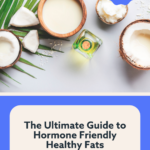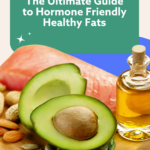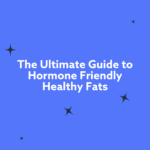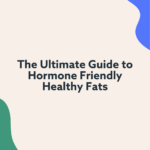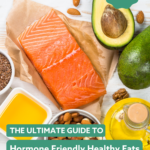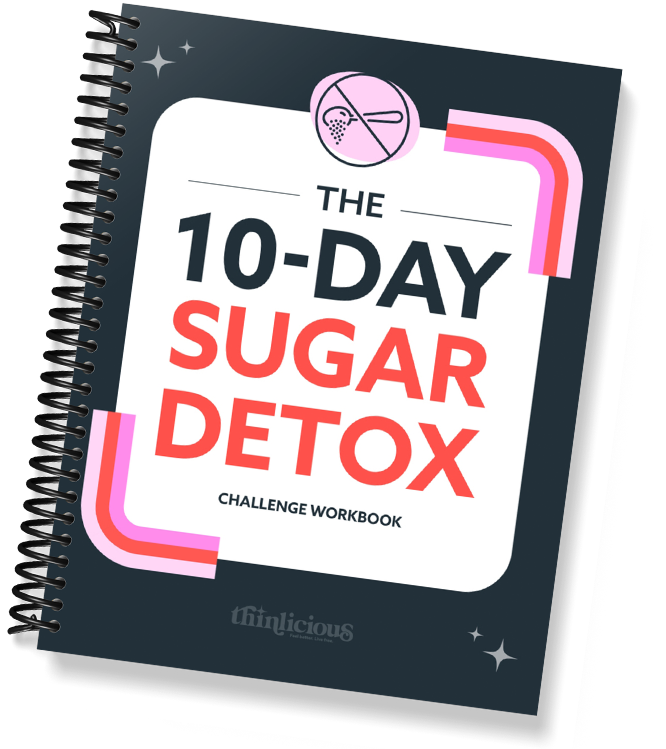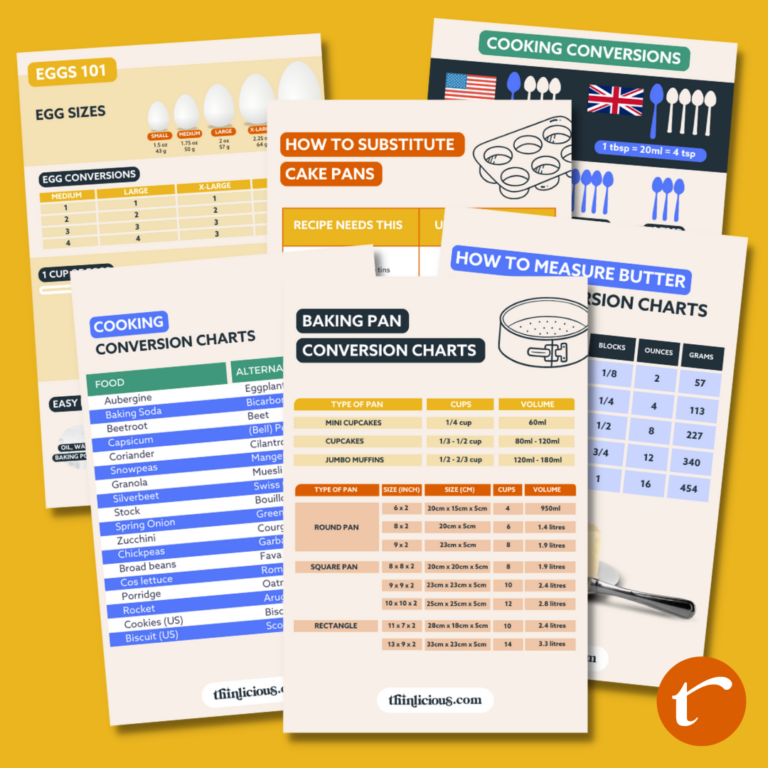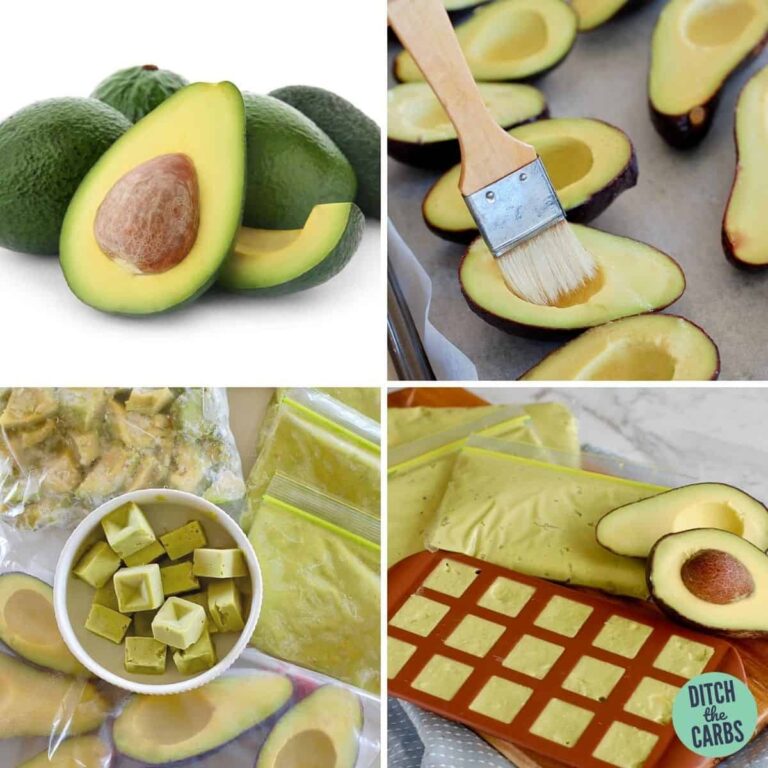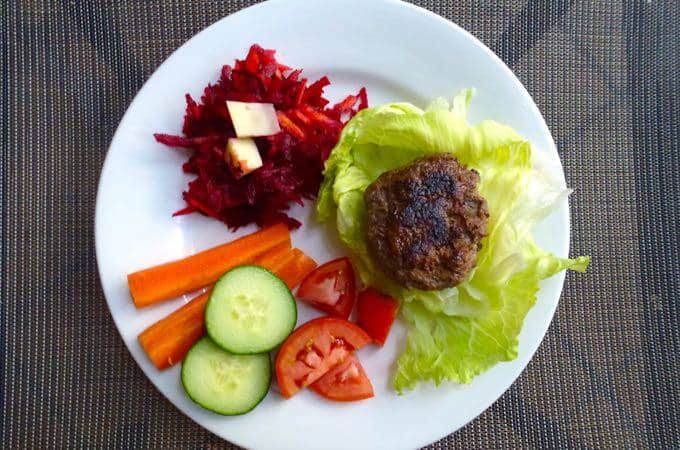If you grew up in the 80’s and 90’s like me, then you’ve probably be conditioned to believe that FAT is BAD.
And honestly, I think that’s a hard bias to overcome.
Because for YEARS, we were told that fat was bad for us, that it clogged our arteries and made us gain weight, that it was the root cause of all of our health problems.
And as a result, food manufacturers went out of their way to create low-fat and fat-free versions of all of our favorite foods, and we all went along with it, believing that we were making healthier choices.
Are you ready to lose weight and heal your body for life (without dieting, drugs, or making yourself miserable)?
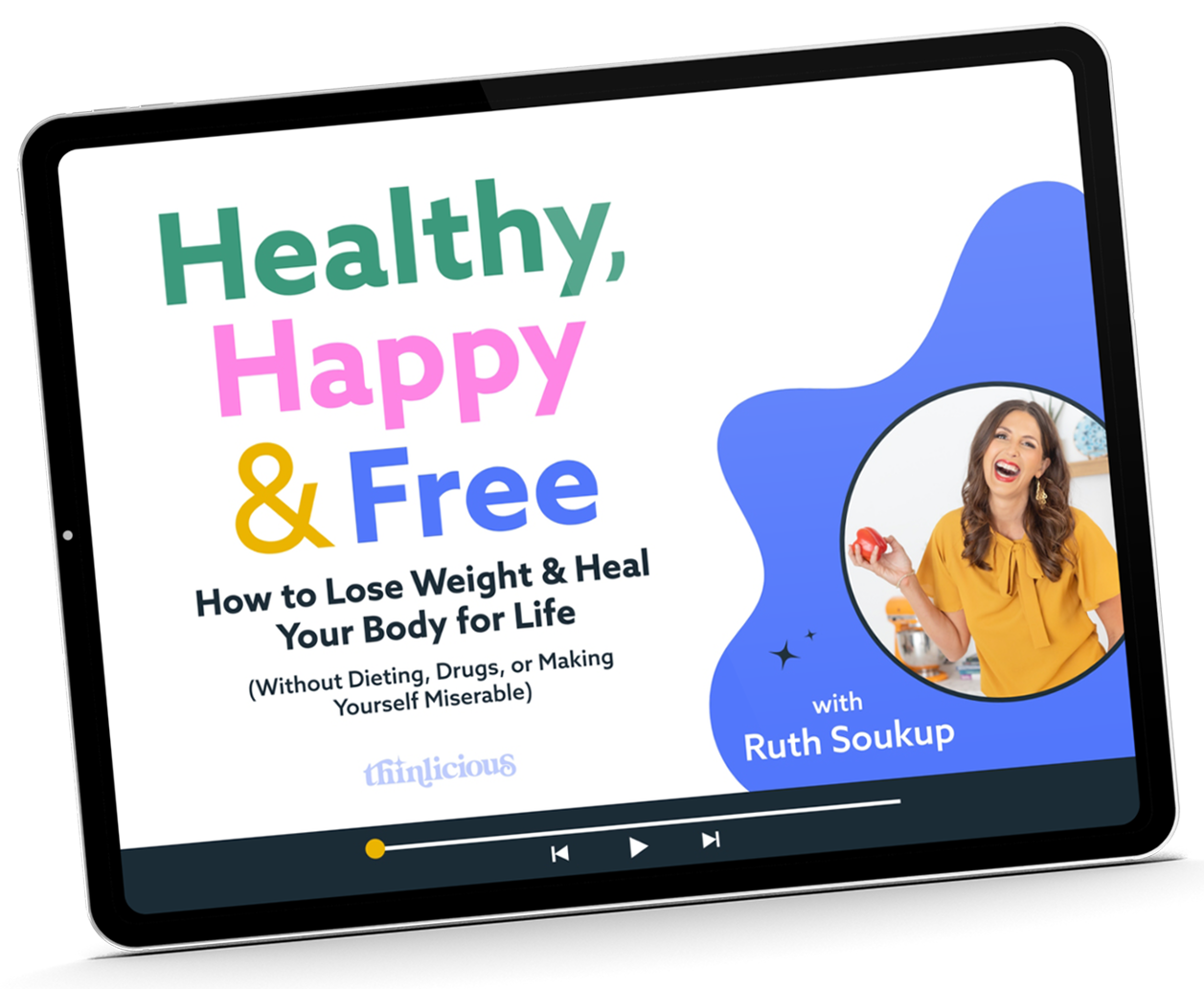
Our free on-demand video training will walk you through how to make this THE year you set health goals…and keep them.
But here’s the thing: it turns out that was all a bunch of nonsense.
In fact, if you’ve been reading this blog for any amount of time, then you’ve probably heard me talk about why fat is actually GOOD for you.
You’ve heard me talk about how it’s our body’s preferred source of fuel, and it’s what helps to metabolize and stabilize your hormones, and how eating more healthy fats and fewer processed carbohydrates can help you lose weight and improve your overall health in SO many ways.
But if that’s true, then which fats ARE good for you?
How do you know which ones to include in your diet and which ones to avoid? And how do you know which fats are actually going to help balance your hormones the way you need them to?
That’s exactly what we’re going to be diving into today—the ultimate guide to hormone-friendly healthy fats, and what you need to know about how they affect your health.
I understand exactly what it’s like to NOT feel that freedom, to struggle with losing weight and getting healthy. I know what it’s like to feel uncomfortable in your own skin, and to feel like you’ve lost your confidence, and to be embarrassed to look in the mirror or have your picture taken, or to say NO to things that you used to enjoy because you just don’t feel your best.
Because I struggled with all of that for a very long time—literally, for years. I got to a point in my life where I felt like I was never going to get a handle on it.
And it wasn’t until I finally decided to do things differently that things changed for me. I started doing a lot of research into the science of weight loss and learning about all the things that cause us to gain weight and store fat, and the role of HORMONES, and I started to realize that basically everything we’ve all been told about how to lose weight and what’s healthy and what’s not healthy is a big fat lie, a lie that’s been made up by Big Food and Big Pharma, and spread by the media and medical industry that are totally under their control.
It makes me sick, especially when I think about how long I struggled for no reason.
And it makes me really mad too, especially when I think about how many OTHER women are struggling with the exact same thing.
And that’s really why I’m SO FREAKING PASSIONATE about it, and why it’s my mission to help women get healthy. It’s why started Thinlicious and why I created the Thin Adapted System.
Because now I know that there is a better way.
And if you’re new, then you may not know yet that our Thin Adapted System is NOT a diet. It’s a lifestyle. It’s about changing your diet to get healthy, and then understanding how the food you eat affects your body and your health, so that you can make that transformation permanent.
And if you want to learn more about how our program actually works, and how we might be able to help you transform your health, then after you finish reading this post, you should go and download my free guide—it’s called Flip the Switch, and it will help you understand so much more about why it feels like your metabolism has stopped working, and what you can actually do about it. It’s really good. And it’s really helpful, and again, it’s free. To get access, just go HERE to grab it.
And if you’re new here, then you also might not know yet that I am also a big believer in the power of healthy eating to transform your life. Because understanding the science behind what happens in our bodies when we eat is what helped me lose 40 pounds and keep it off, and ultimately what led me to create Thinlicious in the first place.
And honestly—the kind of eating that we advocate here is pretty simple. Avoid sugar and processed crap. Eat more healthy fat, whole foods, and nutrient dense protein.
But just because it’s simple, doesn’t mean people don’t still get confused, especially because a lot of what we advocate for here goes against everything we’ve all been told for so long.
It’s basically a process of having to unlearn everything we were told about nutrition growing up, and then re-educate ourselves about what’s actually healthy and what’s not, it can be a bit confusing.
And that’s why I thought it would be helpful in this blog post to really break it all down for you, to explain in simple terms what exactly we mean when we talk about “healthy fats” and how you can easily incorporate more of them into your diet, while still avoiding the ones that aren’t so good for you.
Because the reality is, there is a lot of conflicting information out there, and sometimes what you hear or read can be a little misleading. And if you don’t really understand the science behind it all, it can be hard to know what to believe.
So, let’s start with the basics.
Why are healthy fats, well, healthy?
The truth about healthy fat.
Well, first and foremost, it’s important to understand that fat is not the enemy. In fact, fat is ESSENTIAL to our health, and it plays a vital role in almost every single function in our body—from maintaining healthy skin and hair to insulating our organs and helping to regulate hormones.
Fat is also our body’s preferred source of fuel. Did you know that your body can go days or even weeks without food, but it can only go a few hours without fat? That’s because we need fat for energy, and in order to properly absorb many of the vitamins and minerals we need to survive.
But here’s the problem: most people are not getting enough healthy fat in their diet. In fact, for the last 50 years, the average American has been eating more carbohydrates and less fat than ever before, and our health has seriously suffered as a result. Because as we’ve been eating less fat, we’ve basically been replacing it with highly processed, high-carbohydrate foods—foods that are loaded with sugar and unhealthy fat substitutes like hydrogenated oils and trans fats.
And THOSE are actually the fats you need to be worried about—not the healthy ones, like olive oil and avocados and fatty fish, but the highly processed ones that come from vegetable oils and margarines and all the packaged and processed foods that make up so much of the standard American diet.
Because the reality is that not all fats are created equal. In fact, there are 3 main types of fat that you need to be aware of:
Monounsaturated fats
Polyunsaturated fats
and Saturated fats
And each of these fats has a different effect on our bodies, and not all of them are healthy in large quantities.
So let’s talk a little bit about each type of fat and what you need to know.
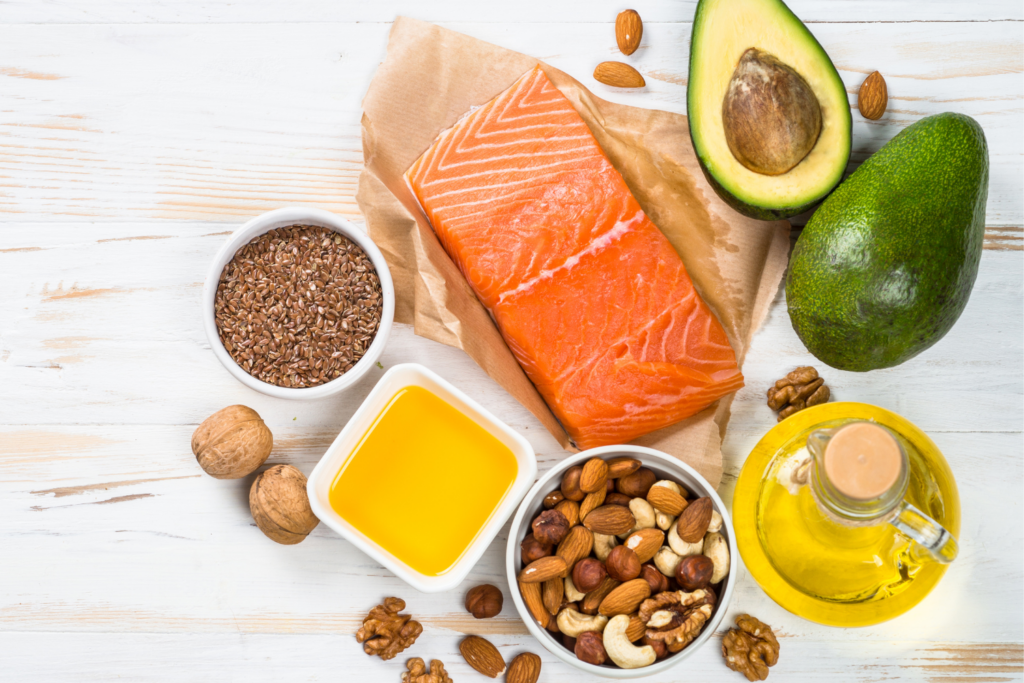
Monounsaturated Fats
First up, monounsaturated fats. Monounsaturated fats are liquid at room temperature, but they start to solidify when refrigerated. They’re found in a variety of foods and oils, including olive oil, avocados, nuts like almonds, cashews, and peanuts, and seeds like pumpkin and sesame seeds.
Monounsaturated fats are considered a healthy fat because they can help lower your LDL cholesterol levels—that’s the so-called “bad” cholesterol that can build up in your arteries and lead to heart disease. These fats are also a good source of the antioxidant vitamin E, which has been linked to a lower risk of heart disease and certain types of cancer.
Overall, monounsaturated fats are a great choice for cooking and adding flavor to your meals, and they’re an important part of a healthy diet. Just be sure to choose the highest quality oils and fats that you can afford, because not all olive oils are created equal. Look for extra virgin olive oil, which is less processed and contains more of the beneficial antioxidants, and avoid any oils that have been blended with cheaper vegetable oils.
Polyunsaturated Fats
Next up, let’s talk about polyunsaturated fats. Like monounsaturated fats, polyunsaturated fats are also liquid at room temperature and start to solidify when refrigerated. They’re found in a variety of plant-based oils, as well as in fatty fish and seafood, nuts & seeds, and egg yolks.
There are two main types of polyunsaturated fat: omega-6 and omega-3 fatty acids. These differ in their chemical structure, as well as the unique effects that they have on overall health.
Omega-3 fatty acids have been shown to reduce inflammation in the body, which can help protect against heart disease, cancer, and other chronic diseases. They’ve also been linked to improved brain health and a lower risk of depression and anxiety. Omega-6 fatty acids are important for brain function and growth and development, but it’s important to get the right balance of omega-3s to omega-6s in your diet.
That’s because most of us are getting way too many omega-6 fatty acids and not enough omega-3s, and this can actually contribute to inflammation and other health problems. So while it’s good to include polyunsaturated fats in your diet, you’ll want to be mindful of your overall omega-3 to omega-6 ratio.
Polyunsaturated fats are also a little bit confusing, because while TECHNICALLY they are considered a healthy fat, not all polyunsaturated fats are healthy.
Basically the good type of polyunsaturated fats tend to be the ones that are high in Omega 3, while the BAD polyunsaturated fats are the ones that come from any highly processed vegetable oil—things like safflower oil, sunflower oil, corn oil, and soybean oil. Anything that is highly processed is going to be highly inflammatory and definitely the kind of fat you want to stay away from.
So that’s polyunsaturated fat.
Saturated Fats
Finally, let’s talk about saturated fats. Saturated fats are solid at room temperature, and they’re found in a variety of animal-based foods, like meat, poultry, eggs, and dairy products. They’re also found in some plant-based oils, like coconut oil and palm oil, as well as in tropical oils like cocoa butter and shea butter.
Saturated fats have long been considered a “bad” fat, and for many years, we were told to avoid them at all costs. But recent research has shown that saturated fats are not actually as harmful as we once thought, and that they can actually be a healthy part of a balanced diet.
In fact, studies have shown that replacing carbohydrates with saturated fats can help improve your cholesterol profile by increasing levels of HDL cholesterol, which is the so-called “good” cholesterol that helps to remove LDL cholesterol from your arteries. Saturated fats have also been shown to reduce inflammation in the body and improve insulin sensitivity, which can help to prevent type 2 diabetes.
That said, it’s still a good idea to focus on getting your saturated fats from the highest quality sources that you can afford. For example, choose grass-fed meat and dairy products whenever possible, because they contain higher levels of beneficial nutrients like omega-3 fatty acids and conjugated linoleic acid.
Trans Fats
And finally, it’s important to talk about trans fats for just a minute, because these are the fats that you REALLY want to avoid at all costs. Trans fats are a type of unsaturated fat that have been chemically altered to make them more stable and solid at room temperature. They’re found in a variety of processed and packaged foods, like margarine, shortening, and commercial baked goods.
Trans fats are the absolute worst type of fat for your health, and they’ve been linked to an increased risk of heart disease, stroke, and other chronic diseases. In fact, trans fats are so harmful that the US Food and Drug Administration has banned their use in commercial food products, although some products may still contain small amounts of trans fats.
So the bottom line is this: when it comes to healthy fats, it’s important to focus on getting a good balance of monounsaturated fats, polyunsaturated fats, and saturated fats, while avoiding trans fats as much as possible.

Practical tips for incorporating more healthy fats into your diet
So now that you know what to look for—and what to avoid!—when it comes to healthy fats, what are some practical ways that you can start incorporating more of them into your diet?
Well, here are a few tips to get you started:
Change your cooking oil
First, be sure to cook with olive oil, avocado oil, or coconut oil instead of vegetable oil or shortening. Olive oil, avocado oil, and coconut oil are both great options for cooking at higher temperatures, and they’ll add tons of flavor and healthy fats to your meals. Just be sure to choose high-quality oils and avoid any that have been blended with cheaper vegetable oils. Butter is fine for lower heat, but if I’m using a higher heat I like to blend it with avocado oil.
But basically you should just throw out any inflammatory seed oils you have in your pantry and never use them again. They’re toxic. Get rid of vegetable oil, canola oil—anything made from corn or cottonseed or grapeseed or soybeans or sunflower. You don’t want that stuff in your body. Also get rid of margarine and shortening—no more Crisco!
And one thing we don’t always think about, but this goes for your mayonnaise and other fatty dressings as well. Switch to an avocado mayonnaise—I like the Chosen brand, and either make your own salad dressing or find one that’s made with good ingredients.
Eat more avocado
Another easy way to get more healthy fat is to add avocado to your meals. Avocados are one of the best sources of healthy fat, and they’re also packed with fiber and other important nutrients. Try adding slices of avocado to your salads and sandwiches, or use them to make guacamole, or just eat them on the side with salt and pepper.
Eat more fatty fish
You can also eat more fatty fish. Fatty fish like salmon, mackerel, and sardines are not only delicious, but they’re also packed with omega-3 fatty acids and other important nutrients. Try to include fatty fish in your diet at least once or twice times a week, or consider taking a high-quality fish oil or algae oil supplement.
Switch to full fat dairy
The next thing is to make sure you’re switching to full-fat dairy products. Contrary to what you may have heard, skim milk is not better for you! Whenever possible, use heavy cream instead of milk, and always choose the highest fat version of other dairy products like milk, cheese, and yogurt. Also be sure to choose the highest quality products that you can afford, and opt for organic and grass-fed whenever possible.
Choose fattier cuts of meat
Next, when it comes to meat, don’t be afraid to choose the fattier cuts. If you’re going to have steak, choose a ribeye instead of a sirloin or filet. Eat your chicken with the skin on, or choose the darker meat. As I mentioned earlier, grass-fed meat and dairy products contain higher levels of beneficial fatty acids like omega-3s and conjugated linoleic acid. And choosing fattier cuts of meat can also help you stay fuller longer and prevent overeating.
That said, if you DO choose a leaner cut of meat—say chicken breasts, or pork chops, or leaner cuts of beef, be sure to cook it with plenty of healthy fat or add a sauce made with healthy fats.
Add in MCT oil where you can
Finally, a great way to get more healthy fat in your diet is to add in some MCT oil where you can. MCT stands for medium chain triglycerides, which are a type of healthy fat that’s found in coconut oil and certain other foods. You can add MCT oil to your coffee or tea, blend it into smoothies, or just drizzle a little over your food or salad before eating. Just bear in mind though that for some people, too much MCT oil can cause gastrointestinal issues, so be sure to start SLOWLY and build up.
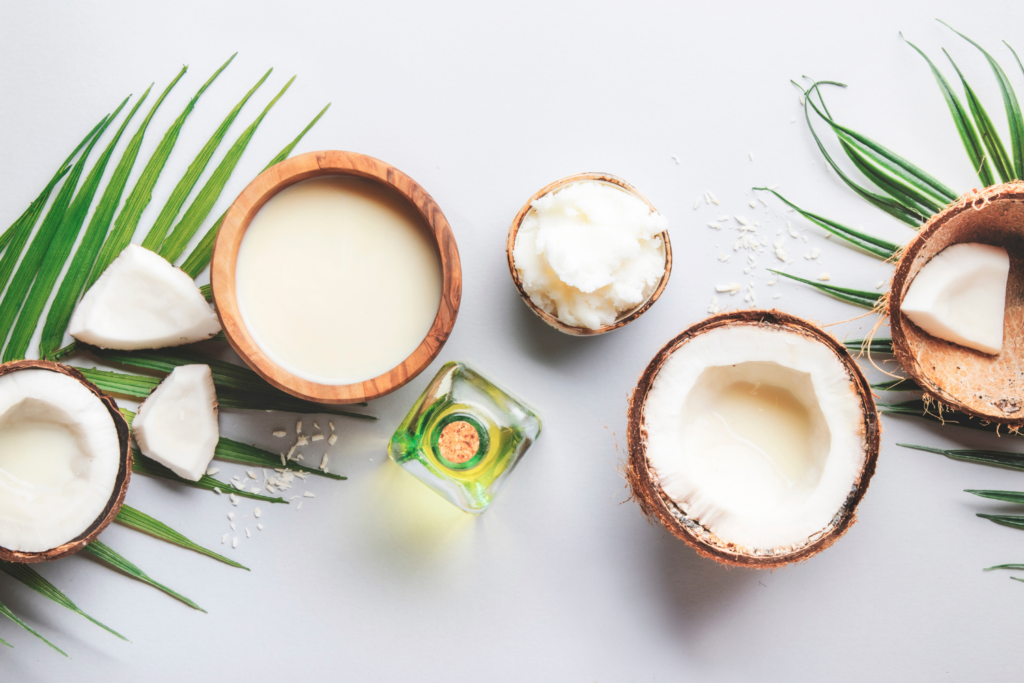
Final Thoughts
So to wrap it all up, the key to a healthy diet that includes plenty of healthy fats is all about balance. Focus on getting a good mix of monounsaturated fats, polyunsaturated fats, and saturated fats, while avoiding trans fats as much as possible. And don’t be afraid to enjoy plenty of healthy, whole-food sources of fat, like olive oil, avocados, nuts and seeds, and fatty fish.
And there you have it—the ultimate guide to healthy fats! I hope that this information was helpful for you, and that it encourages you to get a little more adventurous in the kitchen, and to try incorporating some of these delicious and beneficial fats into your diet!
Of course, if you’re looking for even more information about how to get started with a healthy eating plan that actually works for weight loss, then I’d love to invite you to download our free guide. It’s called Flip the Switch, and it’s a fantastic resource that dives deeper into some of the science behind what we teach here at Thinlicious, and how our program can help you heal your metabolism, burn fat, and increase your energy levels.
You can grab your free copy HERE.
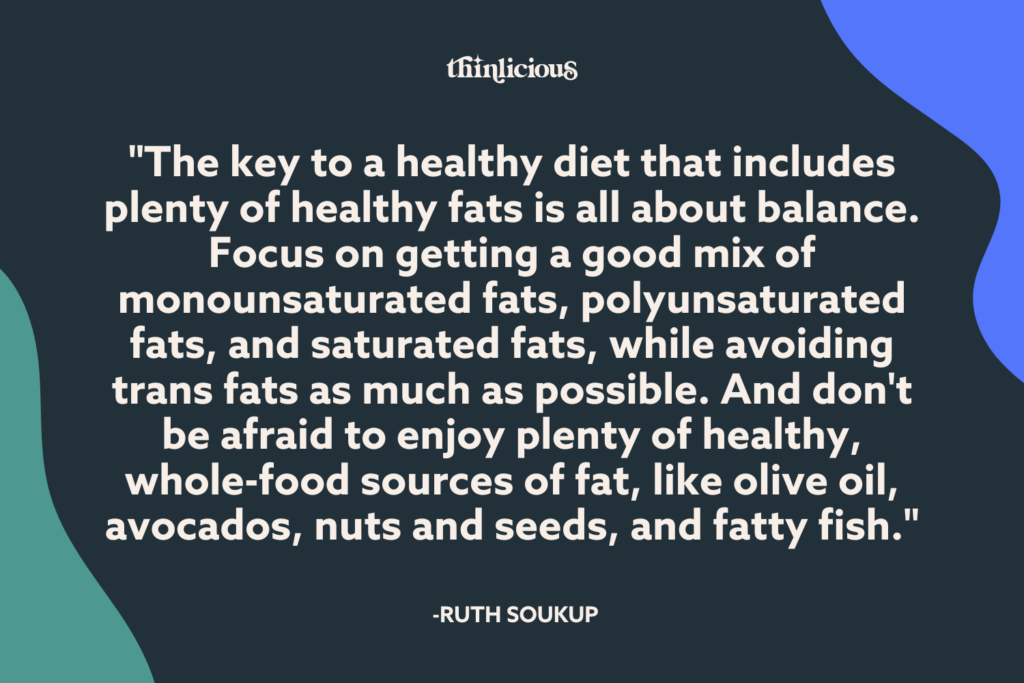
What if you could actually take control of
your health in just 10 days?
It’s not your fault you can’t lose weight as a woman over 40 even though you’ve likely tried literally everything. Your metabolism probably feels broken and your hormones are likely all out of whack.
But you can fix it all with ONE simple change: eliminate sugar. We make it super easy with daily lessons teaching you the science behind what makes us gain weight in our midlife and beyond! Are you ready to get started now?

